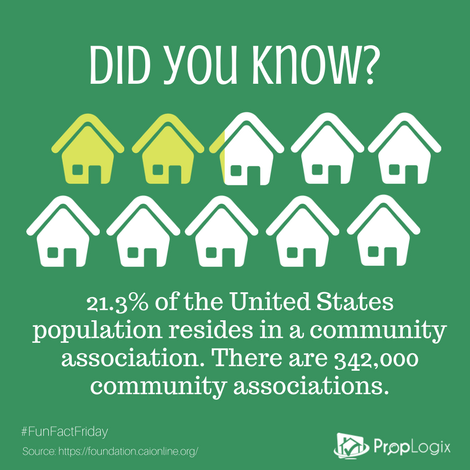We know you’re a busy real estate professional, but busy isn’t bad! Despite the current workload, title and real estate agents must stay engaged with their clients if they want to get referrals. Real estate is all about relationships! Establishing yourself as a thought leader and educational resource for other professionals and potential or current clients by writing and sharing helpful content is one of the best ways to keep your business growing, but it’s not always easy to come up with new topics.
Fortunately, you don’t have to reinvent the wheel every time in order to meet your goals for leads by driving people to your website. According to an old adage in marketing, prospects need to hear or see your message seven times before they take action. So, it doesn’t hurt to share your most valuable content in more than one way.
Here are 9 ways you can repurpose content you already have to keep engaging with your audience:
1. Share evergreen content more than once
Information is considered “evergreen” if it remains consistently useful to your audience (your clients and those who influence your clients’ business decisions). Your best content deserves an encore, especially the posts that remain relevant and timely to those in your industry. If you are a small company or independent agent looking to make an impression on social as an industry thought leader, there are free options for scheduling out evergreen material that you’ve created or posts from others that you think are helpful. You can set it and forget with social sharing and monitoring tools like Hootsuite.
Be sure to change the messaging from the last time you posted it. If it is a list, feature one of the items as a teaser or pose a question to the reader to encourage comments.
Take a great piece of content, tweak it, and then re-publish it elsewhere.
2. Re-publish
This is a great way to get your name and message out there, but if it’s not done according to Google or other search engine’s rules, you may risk getting dinged for duplicate content, which hurts your website’s rankings.
Medium, Business Insider, Entrepreneur, Fast Company, Vox, Mashable, and Elephant Journal are some of the most popular republishing platforms.
There’s also LinkedIn’s publishing tool which is great for building your personal brand as a professional and establish thought leadership in your industry as well as representing the company you work for. Due to the extremely high site authority of LinkedIn and Medium, the republished article on these sites may outrank the original on your site. But it will increase the opportunity for referral traffic, which is still a great option if you are looking to expand your reach, build brand awareness, capture an audience of new readers, and educate as many people as possible.
According to Google, if you’re syndicating your content on other sites, they will always show the version they think is most appropriate for the user depending on their specific search. It’s important to make sure that each site on which you syndicate blog posts that you link back to the original article.
You can also request those who use your syndicated material to use the no-index meta tag to prevent search engines from indexing their version instead of yours. For a deeper understanding of duplicate content and how to deal with it, check out this helpful guide from Moz.
3. From Powerpoint to Slideshare
Best practices and legislative changes are fairly common in the real estate industry, so creating educational pieces to update your team is probably common. If there is a presentation that you recently completed and feel especially proud of, consider turning it into a slide deck.
Edit the information to be more digestible for your clients and upload it directly into SlideShare. From there, you can also embed the presentation in one of your web pages or blog posts.
4. Image with a quote for easy social sharing
Using Canva and Pixabay or Flaticon, you can download a photo you like and add a quote on top or pull a quote from one of your blogs and add a simple visual icon. You don’t have to be a professional graphic designer to make something simple.
Have fun and experiment! See what gets the most engagement from your audience.
5. Infographic from statistics
Turn a statistic from one of your blog posts or other pieces of content into an infographic. Perhaps one of your blog posts or slides from the presentation you uploaded to SlideShare has some striking stats that affect your clients. Create a visual representation of this and share on social. You can use the graphic as another way to promote the original post on various platforms.
After you have created several of these fun images, you can compile them to create a “Best of” blog article, like this post on the best real estate and title industry fun facts from 2018.
6. Turn stats into simple Tweets
You can also turn those stats into individual tweetable elements. You can add a Click to Tweet option at the end of some statistics in your article or pick one of the most compelling stats to tweet out to your followers. Be sure to add a link to the full article, a relevant hashtag, and when possible, tag the source if they have a twitter account. Creating a Twitter-friendly image with the statistics is also a great option and will probably perform the best.
7. Compile blogs to create a guide
If you’ve been in the title or real estate industry for a while, you probably have a wealth of knowledge to dispense. If you’ve also been writing about your industry for awhile, you probably have a lot of content. Find several posts that have a common theme and compile them to create a guide.
Be sure to focus on a goal that’s important to your clients. For a title agent, perhaps a guide for a new real estate agent on what they need to know about title would make a great educational piece. For real estate agents, a seller’s guide on how to prepare their home for an open house or a buyer’s guide on must-do’s before closing could be a great way to reach consumers.
Add this guide to your website as a piece of content gated by a form asking for their name and email if you want to get new leads. This will give you an opportunity to email market to a potential client.
Most people end up working with those who first educate them on a problem and help them solve it, so if you are the professional to make the first connection and educate them on how your services are valuable, they will most likely end up giving their business to you.
8. Videos
Video marketing is one of the most effective tools in gaining new business for any kind of company. The statistics make it obvious. According to Cisco’s Visual Networking Index, by 2021, IP video traffic will account for 82% of all global consumer Internet traffic. People just seem to prefer video to text. Even 59% of executives would rather watch video than read text.
A lot of people assume you have to have a big budget and a lot of talent to create a compelling video. But thanks to smartphones and lots of free or cheap apps, that’s not the case anymore. Your video marketing efforts can be as simple as sharing an insightful story or tip on Facebook live, LinkedIn, Instagram or Snapchat.
If you’re camera-shy, you can utilize programs like Adobe Spark and Animoto to put together a simple video with photos, text, and background music. There are also a lot of tools to create animated videos like PowToon, Animaker, and GoAnimate.
Not all of these are free, so if you don’t have the budget, time or interest in creating videos, you can write a short script based on one of your published articles and send it to a freelancer on a site like Upwork or Fiverr.
9. Publish an update
Not all your content will be evergreen, or, like any industry, major legislative changes and new industry standards implementations may require you to update old posts. This can be a great way to capitalize on a trending search and gain new visitors. An update can be as simple as adding a few lines of content to reflect changes in best practices, remove outdated information, changing out images, adding an infographic that illustrates the major points, or reformatting the blog and improving the general readability of the post.
Some of these take a little more effort than others, but they all offer an opportunity for more exposure and a chance to educate a new audience. Some may prove to be more fruitful than others, so invest the time and money into the ones that reap the most rewards for your company.



.png)










